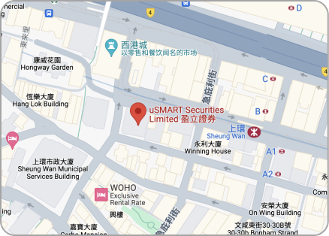IDC:去年第四季可穿戴裝置出貨量升27.2% 蘋果、小米(01810.HK)市佔率排首兩位
阿思達克 03-16 09:56
調查機構IDC發表的報告指,去年第四季全球可穿戴裝置出貨量升27.2%至1.535億台,主要受惠新設備推出及價格下降,總計去年全年出貨量則升28.4%至4.447億台。
該行的分析指出受惠新產品推出及季節性因素,第四季消費有所轉變,疫情下利好健康及運動方面的消費,而可穿戴裝置亦是在家運動的重要元素,此外健康監測包括體溫、心率等亦有助用家及醫護監控及追蹤疾病。
IDC指出受全球半導體短缺影響,可穿戴裝置市場亦不是全部錄得增長,值得留意手環出貨量第四季跌17.8%,僅佔出貨量的11.5%,而耳機類產品則佔整體出貨量的64.2%。
按品牌劃分,第四季蘋果(AAPL.US)出貨量升27.2%至5,560萬台,市佔達36.2%,其中智能手錶出貨量升45.6%,耳機出貨量增速則放緩至22%。小米(01810.HK)出貨量則按年升5%至1,350萬台,排全球第二,期內受供應緊張影響手環出貨量跌18.3%,但耳機出貨量則升55.5%,IDC預期公司定位良好有望捕捉華為的份額,另外亦可受惠EMEA市場的增長。
Follow us
Find us on Facebook, Twitter , Instagram, and YouTube or frequent updates on all things investing.Have a financial topic you would like to discuss? Head over to the uSMART Community to share your thoughts and insights about the market! Click the picture below to download and explore uSMART app!

Disclaimers
uSmart Securities Limited (“uSmart”) is based on its internal research and public third party information in preparation of this article. Although uSmart uses its best endeavours to ensure the content of this article is accurate, uSmart does not guarantee the accuracy, timeliness or completeness of the information of this article and is not responsible for any views/opinions/comments in this article. Opinions, forecasts and estimations reflect uSmart’s assessment as of the date of this article and are subject to change. uSmart has no obligation to notify you or anyone of any such changes. You must make independent analysis and judgment on any matters involved in this article. uSmart and any directors, officers, employees or agents of uSmart will not be liable for any loss or damage suffered by any person in reliance on any representation or omission in the content of this article. The content of this article is for reference only. It does not constitute an offer, solicitation, recommendation, opinion or guarantee of any securities, financial products or instruments.The content of the article is for reference only and does not constitute any offer, solicitation, recommendation, opinion or guarantee of any securities, virtual assets, financial products or instruments. Regulatory authorities may restrict the trading of virtual asset-related ETFs to only investors who meet specified requirements.
Investment involves risks and the value and income from securities may rise or fall. Past performance is not indicative of future performance.



